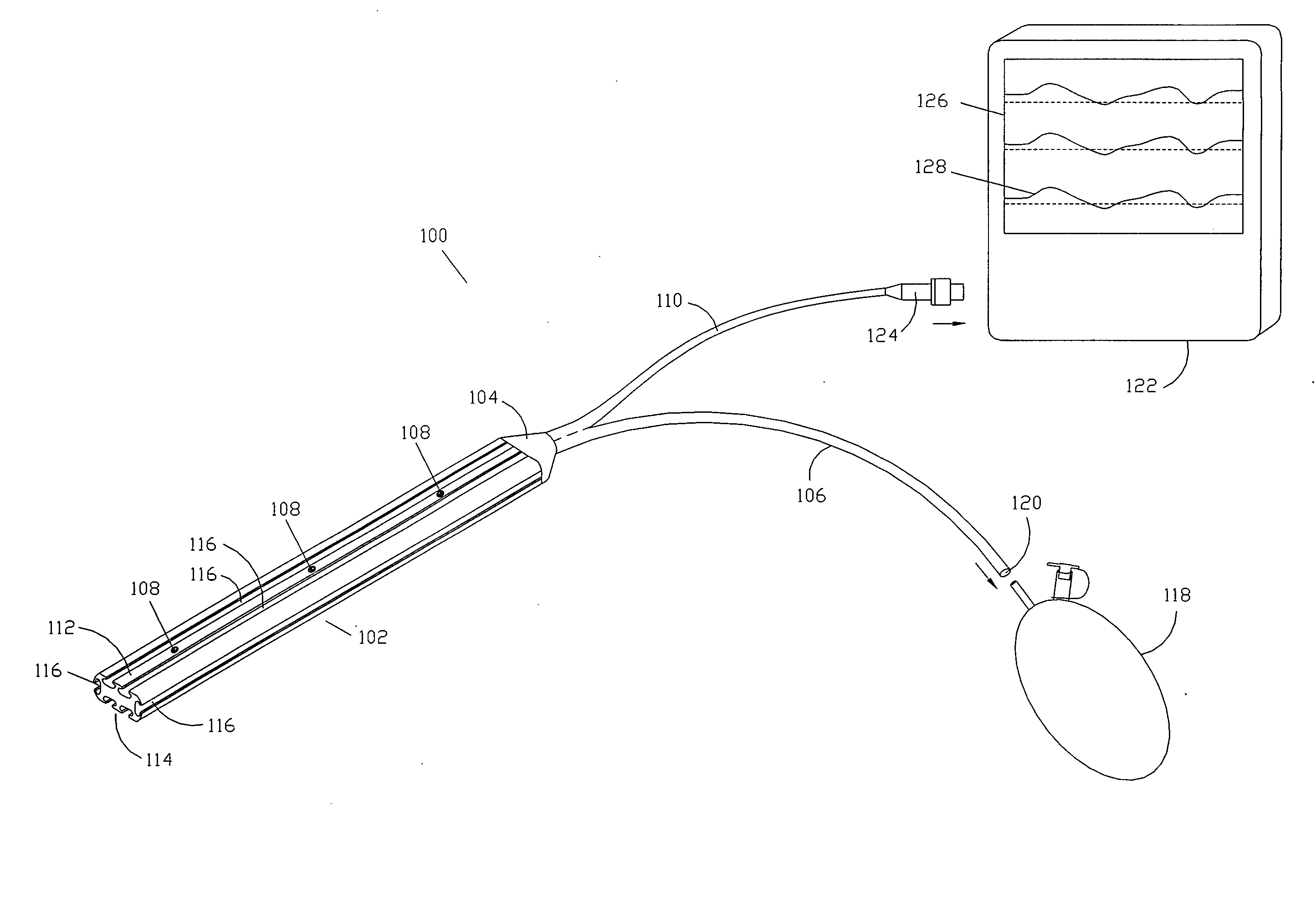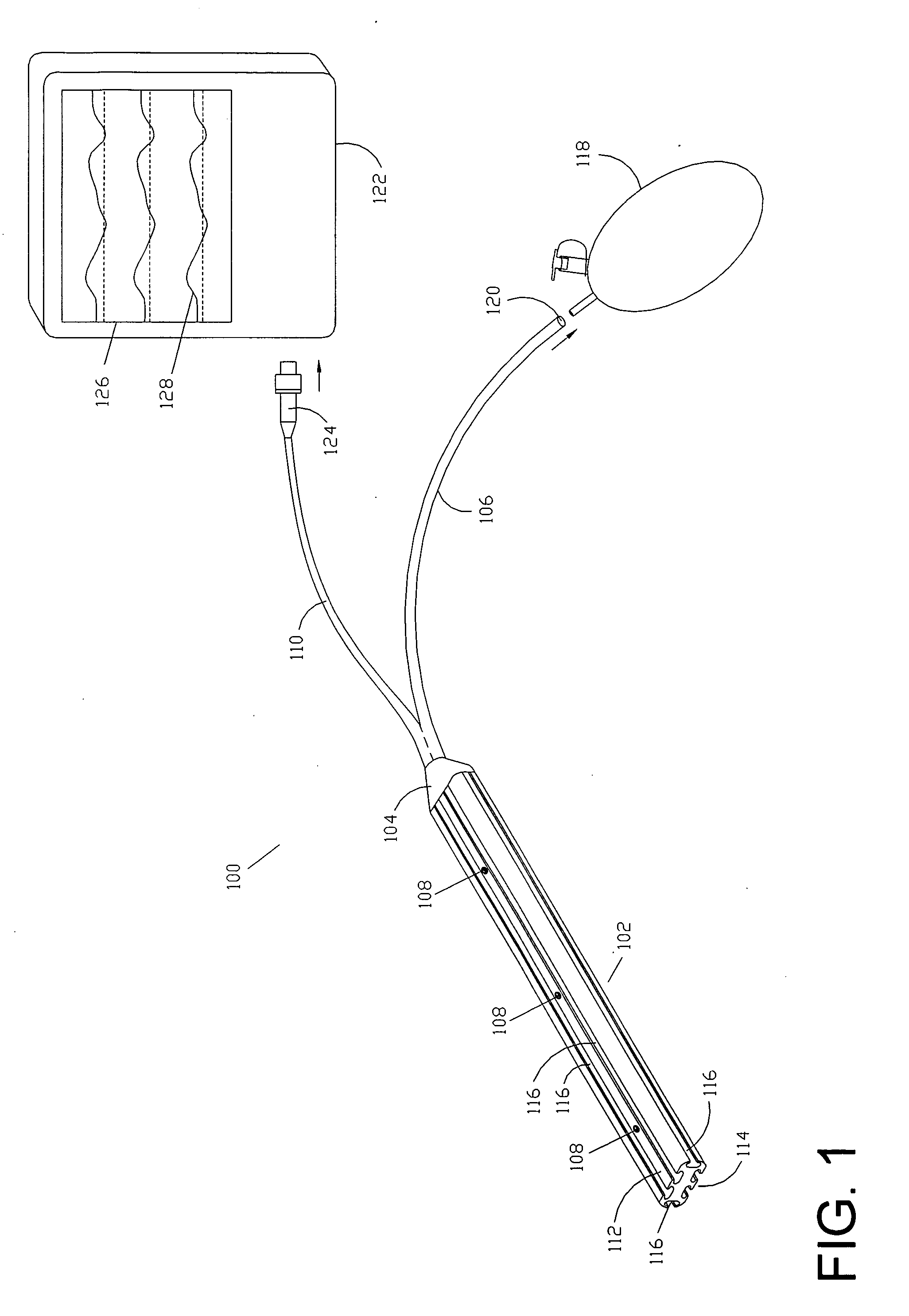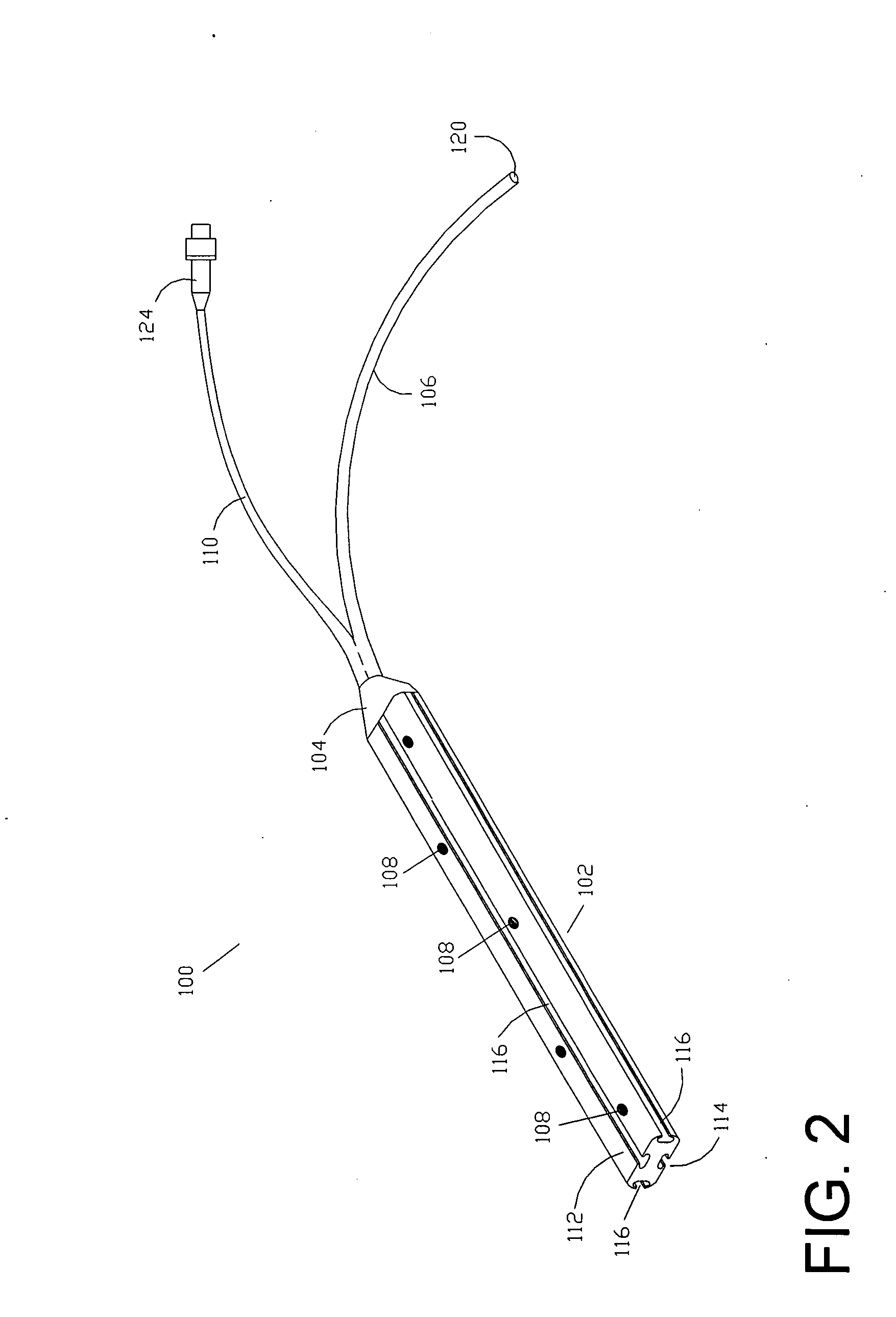Methods and devices for surgical drains with sensors
a technology of surgical drains and sensors, applied in the field of methods and devices for surgical drains with sensors, can solve the problems of compromise the survival of the organ, introduce vascular complications to the remaining portion of the organ, and test results have no dynamic valu
- Summary
- Abstract
- Description
- Claims
- Application Information
AI Technical Summary
Problems solved by technology
Method used
Image
Examples
Embodiment Construction
[0027]One embodiment of the drain probe 100 is shown in FIG. 1. The drain probe 100 may be comprised of a drain body 102, a fluid collection funnel 104, a fluid draining tube 106, sensors 108, and data cable 110. The drain body 102, collection funnel 104, and draining tube 106 may be made of flexible material such as medical-grade silicone or other elastomeres. The drain body may be made of a radiopaque material such as barium-loaded medical grade silicone for easier detection using radiographic techniques.
[0028]The drain body 102 may be preferably flat with a cross-section that is approximately rectangular in shape with a first surface 112 and a second surface 114. Alternatively, the cross-section of the drain body 102 may be square, elliptical, semi-circular, semi-elliptical, or trapezoidal in shape. A drain body 102 with a semi-elliptical or semi-circular cross-section may be advantageous in increasing the contact pressure between the sensors 108 and the adjacent tissue whereas t...
PUM
 Login to View More
Login to View More Abstract
Description
Claims
Application Information
 Login to View More
Login to View More - R&D
- Intellectual Property
- Life Sciences
- Materials
- Tech Scout
- Unparalleled Data Quality
- Higher Quality Content
- 60% Fewer Hallucinations
Browse by: Latest US Patents, China's latest patents, Technical Efficacy Thesaurus, Application Domain, Technology Topic, Popular Technical Reports.
© 2025 PatSnap. All rights reserved.Legal|Privacy policy|Modern Slavery Act Transparency Statement|Sitemap|About US| Contact US: help@patsnap.com



